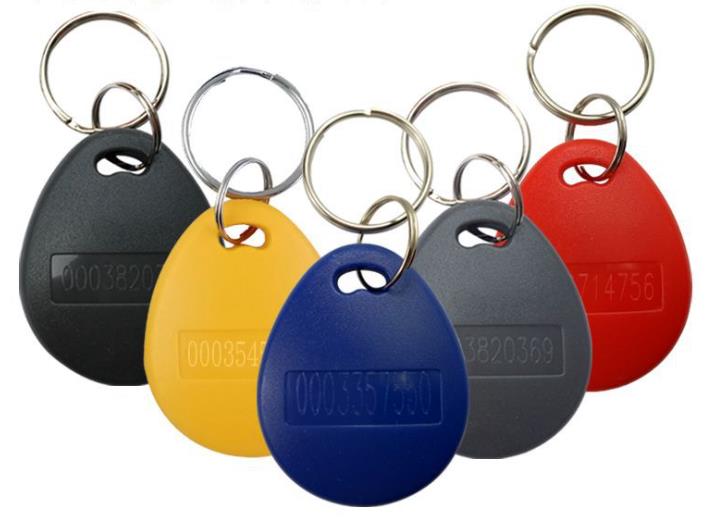RFID Compliance and Standards: What U.S. Businesses Need to Know
Radio Frequency Identification (RFID) technology is revolutionizing industries ranging from retail to logistics, enabling businesses to track assets, streamline operations, and enhance customer experiences. However, with the widespread adoption of RFID, businesses in the United States must navigate a complex landscape of regulatory compliance to ensure the technology works effectively and legally. Understanding the key compliance requirements, particularly with respect to the Federal Communications Commission (FCC) regulations and industry standards, is critical for any business implementing RFID systems.
Table of Contents
- Introduction
- What is RFID Technology?
- RFID Compliance and Regulatory Landscape
- Benefits of RFID Compliance
- Conclusion
What is RFID Technology?
RFID uses electromagnetic fields to automatically identify and track tags attached to objects. These tags consist of a small chip and an antenna, which communicate with a reader device. RFID technology is particularly useful for inventory management, asset tracking, and supply chain optimization, providing real-time data without requiring direct line-of-sight scanning like barcodes. However, because RFID systems use radio waves, they are subject to regulations to avoid interference with other devices and ensure safe and efficient operation.
RFID Compliance and Regulatory Landscape
In the U.S., RFID systems operate within a regulatory framework designed to manage radio frequency spectrum use, minimize interference, and protect public safety. The key compliance areas for businesses deploying RFID include:
1. FCC Regulations
The Federal Communications Commission (FCC) is the primary regulatory body overseeing the use of radio frequencies in the U.S. The FCC regulates the radio spectrum to prevent interference between different wireless communication systems, including RFID devices. RFID systems typically use frequencies in the Ultra High Frequency (UHF) and High Frequency (HF) bands, both of which are subject to strict FCC regulations.
Key FCC Requirements for RFID Systems:
-
Frequency Allocation: RFID devices must operate on designated frequencies to avoid interference with other communication technologies. For example, UHF RFID tags in the U.S. typically operate in the 902–928 MHz frequency range, while HF RFID operates around 13.56 MHz. These frequency bands are allocated by the FCC and businesses must ensure their RFID systems operate within the permitted ranges.
-
Power Limits: To minimize interference with other devices, the FCC imposes limits on the power output of RFID devices. For UHF RFID systems, the maximum allowable transmit power is 4 watts effective isotropic radiated power (EIRP), though this may vary depending on the specific application and environment.
-
Certification and Authorization: RFID devices must be certified by the FCC to ensure they meet electromagnetic compatibility (EMC) standards and do not cause harmful interference. Devices that do not comply with FCC regulations can be subject to fines, recalls, or prohibition from sale.
-
Labeling and Documentation: To comply with the FCC’s regulations, businesses must ensure that all RFID devices are properly labeled, providing certification information. Additionally, documentation demonstrating compliance with power limits and frequency use must be maintained.
2. Industry Standards and Best Practices
Beyond FCC regulations, businesses must adhere to several industry standards to ensure the interoperability, security, and efficiency of their RFID systems. These standards are crucial for establishing uniformity across different manufacturers and sectors, as well as improving the overall performance of RFID deployments.
Global Standards for RFID Compliance:
-
ISO/IEC 18000: The International Organization for Standardization (ISO) and the International Electrotechnical Commission (IEC) have developed a series of standards (ISO/IEC 18000) that cover various aspects of RFID technology, from the air interface to the physical layer of communication. This set of standards ensures that RFID devices from different manufacturers can communicate with each other, promoting interoperability and minimizing issues related to tag reading and data exchange.
-
EPCglobal Gen 2: One of the most widely used standards for UHF RFID in supply chain applications is the EPCglobal Gen 2 standard. This standard governs the performance and functionality of RFID tags, including data encoding, anti-collision protocols, and communication ranges. It ensures that RFID systems are capable of handling large volumes of tags, particularly in environments like warehouses and distribution centers.
-
GS1 Standards: The GS1 organization has developed a global system for identifying and tracking products in the supply chain. RFID tags that comply with GS1 standards are used widely in retail and logistics to improve traceability and ensure product authenticity. GS1 standards cover both the data structure embedded in the tags and the use of RFID for product tracking.
-
ISO/IEC 29167: This standard deals with the security aspects of RFID systems. It defines methods for ensuring the integrity and authenticity of data transmitted by RFID tags, which is particularly important in industries such as pharmaceuticals and automotive manufacturing, where counterfeit products or unauthorized access to sensitive data can have serious consequences.
3. Industry-Specific Considerations
Some industries have specific compliance requirements beyond general FCC regulations and global standards. For example:
-
Healthcare: In the healthcare sector, RFID technology is increasingly used for tracking medical devices, pharmaceuticals, and patient records. Compliance with FDA regulations and standards like the Unique Device Identification (UDI) system is crucial to ensure that RFID systems support traceability and enhance patient safety.
-
Retail: Retailers using RFID for inventory management and loss prevention must consider compliance with both the National Institute of Standards and Technology (NIST) guidelines and industry-specific best practices such as those defined by the Retail Industry Leaders Association (RILA).
-
Automotive: RFID plays a vital role in tracking parts and components in automotive manufacturing. Compliance with ISO/TS 16949, the global standard for quality management systems in the automotive sector, is essential for businesses in this space.
Benefits of RFID Compliance
Complying with FCC regulations and industry standards offers several key benefits:
-
Reduced Risk of Penalties: Non-compliance with FCC regulations can result in fines, legal issues, or the recall of non-compliant devices. Adhering to industry standards also minimizes the risk of product failures or disputes over interoperability.
-
Improved Efficiency: By adhering to global standards like ISO/IEC 18000, businesses can ensure that their RFID systems are efficient, scalable, and compatible with other systems, leading to smoother operations.
-
Enhanced Security: Compliance with security standards, such as ISO/IEC 29167, helps protect sensitive data, ensuring that RFID systems are not vulnerable to hacking or fraud.
Conclusion
As RFID technology continues to grow in adoption across various industries, U.S. businesses must prioritize compliance with both FCC regulations and industry-specific standards. By adhering to these guidelines, companies can avoid costly fines, ensure the reliability of their systems, and maintain smooth operations. Whether navigating power limits, frequency allocations, or interoperability requirements, understanding and meeting RFID compliance standards is essential for businesses looking to maximize the benefits of RFID technology.



